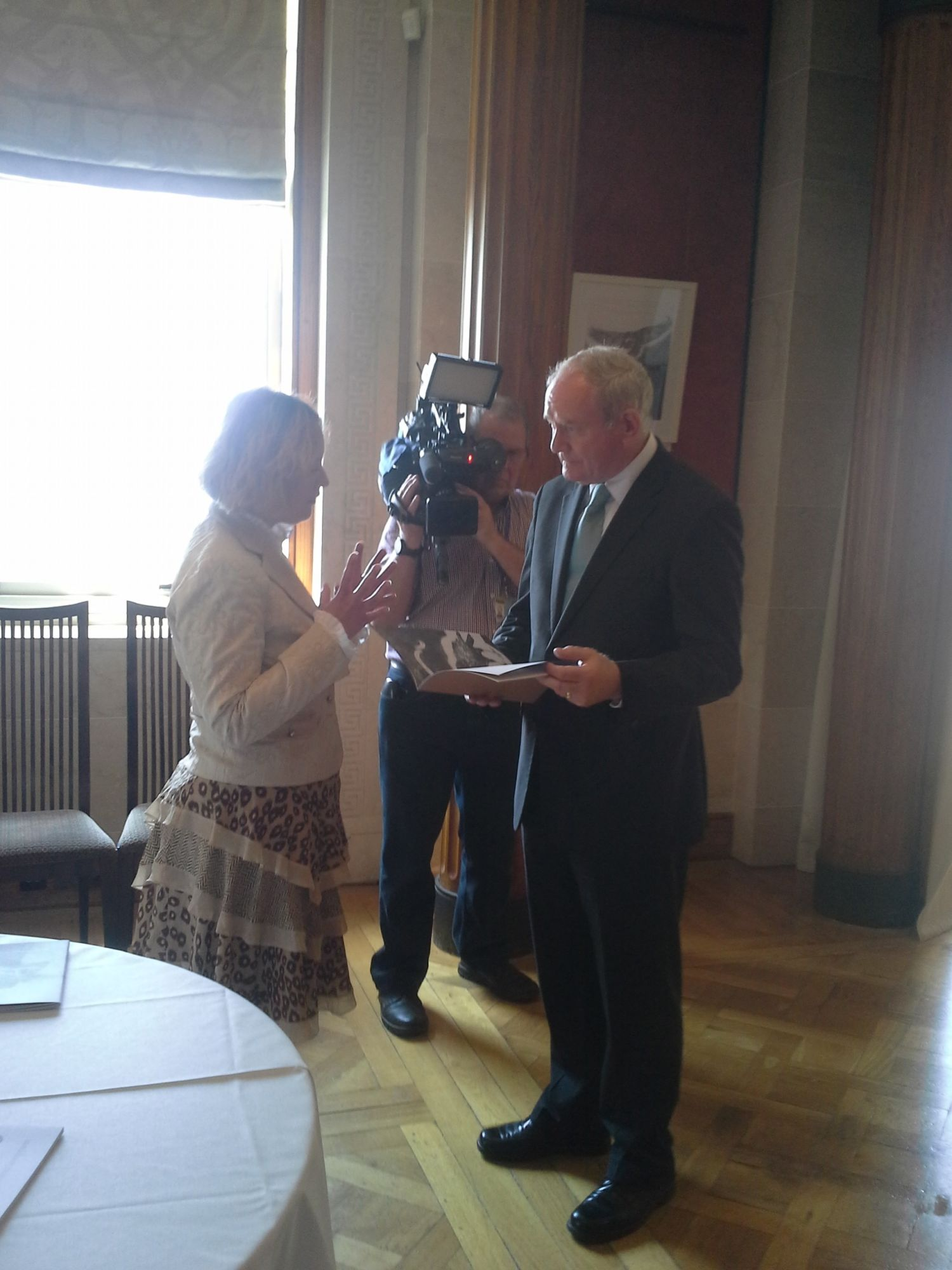'Souls of the Slain - Anamnacha imithe abhaile go Dia'

http://connor.anglican.org/2016/07/15/launch-souls-slain-exhibition-st-annes/
In the catalogue accommpanying this exhibition, The Very Rev John Mann, Dean of Belfast wrote:
The horrors of trench warfare, images of which are familiar from photographs, drawings and paintings of the Great War in France, give everyone some idea of what was the often short and miserable existence for soldiers of all nationalities, facing each other across the mud and barbed wire, and the smashed buildings and trees of what was once beautiful countryside. Poets and artists take us to a different level of understanding, placing an individual human face on the colossal loss of life that the statistics of the Somme and other First World War battles lay before us, as well as the paradoxes that the presence of comradeship and self-sacrifice bring to the violence and destruction of war, especially on the scale of that of 1914-1918.
The inclusion of theological reflection in the mix produces, even out of the ghastliness and sorrow of such immense human suffering, a creative way of considering the place of war in human history and contemporary life. I use the word creative advisedly as indicating not so much good coming out of evil, but how, in the broadest of terms, humanity may find the path to spiritual, physical and emotional well-being, whilst reflecting upon its opposite, even with the compensating presence of immense courage. Writing from a Christian perspective, I cannot but reflect on how war is encompassed theologically and ultimately what this means when placed in the context of the suffering and desolation of Christ.
With these thoughts in mind I am drawn to Eve Parnell's work, and honoured to have been given this opportunity to write some words of reflection upon it. I was first introduced to Eve on the occasion of the unveiling of her inspired re-drawing of St Brigid, after the work of Sir John Lavery that hangs in the Church of St Patrick in Donegal Street in Belfast. Whilst capturing the beauty of the original painting, the elements of interpretation that allowed the life of Brigid to shade the new work with vitality was arresting.
I must be careful not to over-use the word ‘arresting' in this short article, but if I had to choose one adjective to help me declare what Eve Parnell's work brings to me, that would be that word. Her artistic conception of the Somme introduces motifs that produce resonances which on the one hand are restorative, but on the other, painful and heart-rending.
The crow or raven which features in a variety of poses is the clearest of these motifs. These black birds have been seen in middle-eastern culture as harbingers of woe, if not death; interestingly, not so much from an Old Testament perspective, but in a wider indigenous context. In the Old Testament it is recorded that Noah released a raven from the ark first, but it was the dove that was his second messenger who returned with the olive shoot. Ravens fed Elijah at the brook Cherith, during the time of the drought in Israel and in Psalm 147, God himself feeds the young ravens who call upon him. So the crow and raven has come to lose something of their unpleasant associations of feeding on carrion and the young and vulnerable life of other creatures.
In Eve Parnell's work, she has these birds haloed in light and themselves in a variety of non-aggressive poses, imperiled even, carrying in their beaks as twigs to the nest, the drawings on tissue paper - itself ephemeral, expendable, of little substance - and streamers of poetry, or, more precisely, lines of poems; from Thomas Hardy, Rupert Brooke, W.B. Yeats, Padraig Pearse, Eva Gore-Booth, Dora Sigerson-Shorter and Wilfred Owen.
For Eve, a line she takes from Wilfred Owen, and it is carried in a raven's beak, is: "Move him into the sun - /Gently its touch awoke him once". Similar such poignant grasps at the cords of death come from the other poets, such as that, heart-breaking and beautiful, from Dora Sigerson-Shorter: "Languid his closing eyes looked to the breaking dawn". The lines are laid and gathered to form the substance, the cradle of new life and expectation that the sacrifice has not been in vain. There is no glory here, but there is mercy, tenderness, hope and remembrance. For us a century on, there is the chance for the avoidance of such immense sorrow.
Interview by Cherry Casey, British Forces Broadcasting Service, with the Artist and Opening speech by Deputy First Minister Martin McGuinness
Interview with the Artist on BBC Radio Ulster 'The Arts Show' with Marie Louise Muir, broadcast 9 June 2015, available on request http://www.bbc.co.uk/programmes/b07dnjhs